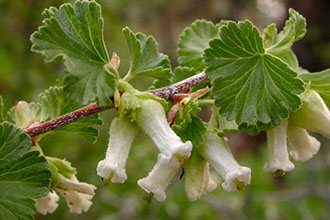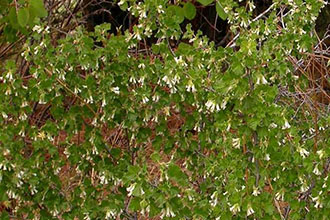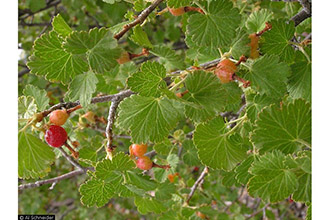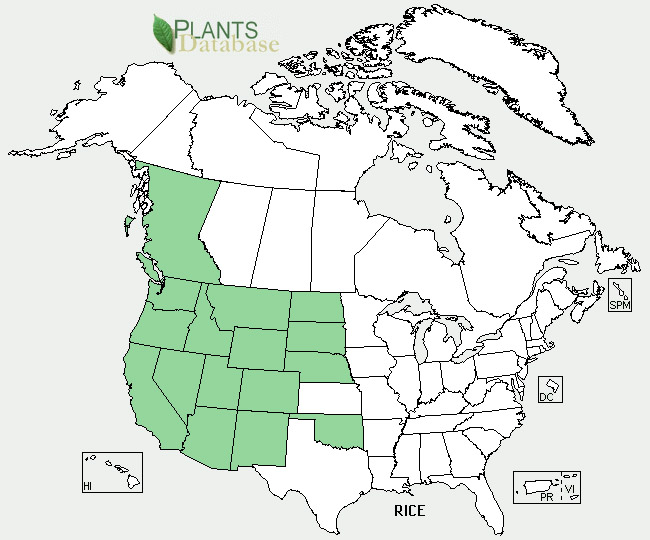Taxonomy: Kingdom - Plantae (plants). Subkingdom - Tracheobionta (vascular plants). Superdivision - Spermatophyta (seed plants). Division - Magnoliophyta (flowering plants). Class - Magnoliopsida (dicotyledons). Subclass - Rosidae. Order - Rosales. Family - Grossulariaceae (currant). Genus - Ribes L. Species - Ribes cereum Douglas
Ecology: Wax currant is shade intolerant. Although it sometimes grows in open coniferous forests, it occurs most often and grows most vigorously on sites without forest canopy. In central Idaho, wax currant is considered an early seral species within Douglas-fir (Pseudotsuga menziesii) habitat types. It is one of the first shrubs to dominate well-scarified sites but declines when a canopy taller than its own develops. A few wax currant may remain present to the midseral stage. Wax currant shrubs having relatively dense canopies provide favorable microsites for Douglas-fir seedlings. In the Bitterroot Mountains of Idaho, Ribes spp. play an important role in secondary succession. Their roots stabilize the soil, and their foliage may shelter fir (Abies spp.), spruce (Picea spp.), and western white pine (Pinus monticola) seedlings.



